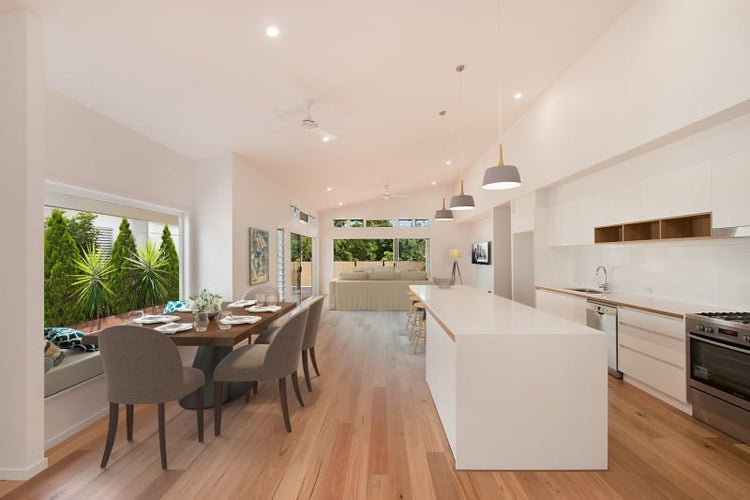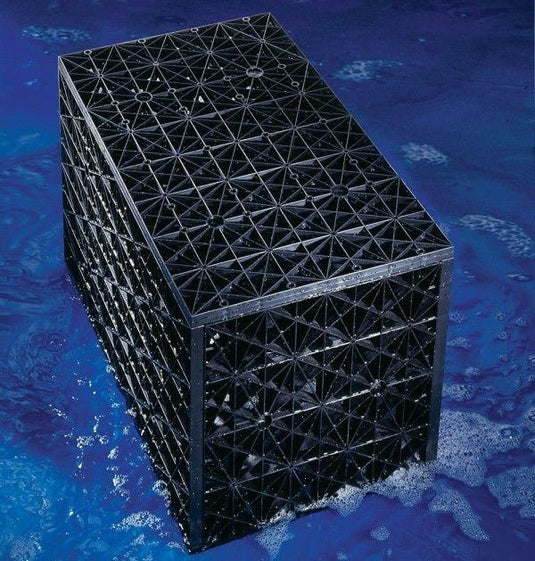From the pale colours of Blackbutt or Tallowwood, through to the rich reds and browns of Spotted Gum, Ironbark and Bluegum, our recycled and sustainably harvested hardwood timbers can be used for a wide variety of building purposes.
Blackbutt
Blackbutt, or "Eucalyptus Pilularis" is a native tree that grows to around 40 meters. It can be found on the south east coast of Australia. Known for it's durability, this timber has been used for hundreds of years.


Blackbutt is a type of native hardwood that has straight and cylindrical trunks, making it perfect for use in home renovations. It produces light timber that has straight, aesthetically pleasing gum veins.
It is a highly sought after timber for flooring, but has also been used for many other building applications and furniture. The colours range from dark yellow, to browns and even a shade of pink!
Blackbutt can also be stained, painted or polished to achieve the look you desire. It’s a great way to add texture and a relaxing sense of earthiness to your interior design project.
Sydney blue gum is an Australian native hardwood that is widely used in general construction, flooring, furniture and joinery. The heartwood ranges in colour from dark pink to reddish brown. Sapwood is distinctly paler. Texture is moderately coarse and gum veins are common. The grain is typically straight, with occasional interlocking.
Tallow wood is a moderate to large tree occurring in wet sclerophyll forests of coastal regions from the Hunter River district of New South Wales to Maryborough and Fraser Island, Queensland.
The heartwood of this species ranges in colour from pale to dark yellow-brown, with occasional tinges of olive green. Sapwood is a whitish colour. The texture of tallowwood timber is moderately coarse, generally with interlocked grain. Unusually for a eucalypt species, tallowwood is free of gum veins. Figure is lacking but the timber possesses a distinctive lustre and ‘greasy’ appearance.
Tallowwood timber products exhibit exceptional durability in both in-ground and aboveground applications, where life expectancy is greater than 25 and 40 years, respectively. Although tallowwood is highly resistant to decay and will withstand damp and wet conditions quite well, its sapwood is susceptible to lyctid borer (powder post beetle) attack. Untreated timber of this species is equivalent to ‘fire retardant treated timber’ when tested in accordance with AS/NZS 3837.
Historically, tallowwood has been used for bearings, mallet heads, mauls, wheel spokes, and tool handles. Current engineering applications include wharf and bridge construction (as sawn and round timber), railway sleepers, cross-arms, poles, piles and mining timbers. Construction uses range from unseasoned framing to dressed timber cladding, internal and external flooring, linings and joinery. Tallowwood is also used in fencing, landscaping and the construction of retaining walls. Decorative uses include outdoor furniture, turnery and joinery. Other applications include boat building, the construction of coaches, carriages and agricultural machinery, and structural plywood.
Spotted gum, or eucalyptus maculata, is a tall tree known for having straight and blotched trunks. The bark strips unevenly every summer, meaning you can usually see patches of smooth, creamy new bark where the rugged, old white or grey bark has peeled back.
Spotted gum is a native hardwood that produces a wavy grain, which makes an extremely attractive polished veneer for use in interior decorating. It’s well suited to flooring, cabinetry, and surfaces. Unseasoned timber can be used to create beautiful design features, such as exposed framing or rustic exterior cladding. When it’s seasoned, however, it can be used to add high-quality finishes such as parquetry, which gives a luxe look to any new renovation. It’s also been named as an Australian Standard bushfire-rated timber, and is commonly used in window sills and other joinery.
Besides interior uses, like flooring and cabinetry, spotted gum can also be used outdoors. Once it’s been seasoned, it can be used as a rustic cladding material for modern Australian builds. Around the house, it’s suitable for carving, woodturning, and manufacturing outdoor furniture. However, given its strength, and its natural resistance to pests like termites, you may also see it used for things like retaining walls, decking, and fencing. There’s really no limit to the ways this timber can be used!
Ironbark Timber Sunshine Coast: Ironbark timber is a premium native Australian hardwood comprised of several different species with a wide range of applications and uses from industrial construction to house framing and flooring. Ironbark timber is a hard-wearing and durable timber that is borer and termite resistant.
Its name comes from the apparent resemblance of its bark to iron slag, the by-product left after the metal has been separated from its raw ore. Ironbark trees have the tendency to not annually shed its bark, resulting in an accumulation of dead bark. This layer of bark protects the living tissue inside the tree from fires, and with a silvery-grey colour looks quite similar to iron metal.
The colour of ironbark timber varies anywhere from dark red, dark brown and pale brown. However, common ironbark has a reddish tone.
Joinery: Ironbark timber joinery products offer a unique and stylish touch to any interior or exterior design. These are produced for a variety of applications including door and window frames, cabinetry, skirtings, mouldings and eye-catching railings.
Decking: Ironbark timber decks are a practical and attractive addition to any outdoor patio space. These timber decks blend seamlessly with the environment and will serve as gorgeous entertainment areas for years to come.
As an external structure with hight traffic and carrying large loads of traffic, ironbark timber decking are the ideal construction material.
Flooring: Ironbark timber flooring has proven to be a timeless product that offers warmth and natural beauty.
Whether for structural or decorative flooring applications, ironbark timber offers durability, versatility and adaptability. The aesthetic and strength of timber flooring have proved to be popular in a wide variety of interior settings.
Fencing: The appeal and strength of ironbark make for the obvious choice in fencing construction projects. Not only does ironbark fencing flow seamlessly with the outside environment, it remains structurally sound for years to come!







